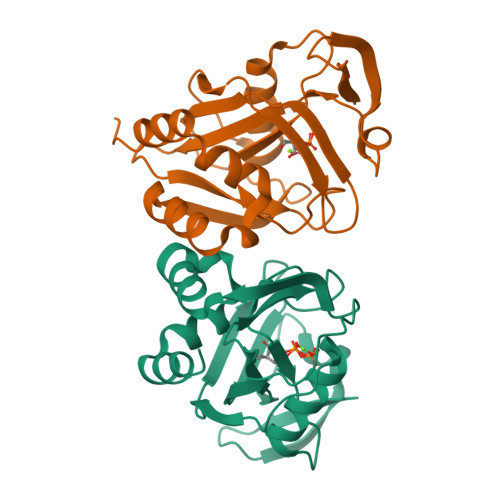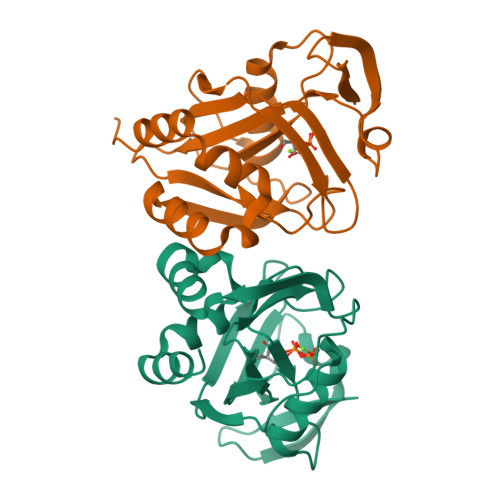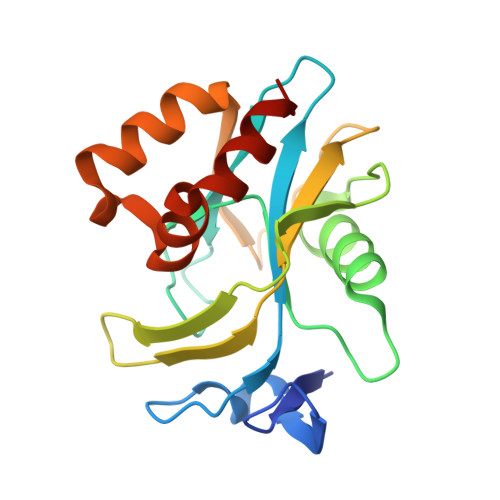Structural role for Tyr-104 in Escherichia coli isopentenyl-diphosphate isomerase: site-directed mutagenesis, enzymology, and protein crystallography.
de Ruyck, J., Durisotti, V., Oudjama, Y., Wouters, J.(2006) J Biological Chem 281: 17864-17869
- PubMed: 16617181
- DOI: https://doi.org/10.1074/jbc.M601851200
- Primary Citation of Related Structures:
1R67, 2B2K, 2G73, 2G74 - PubMed Abstract:
Isopentenyl-diphosphate (IPP):dimethylallyl diphosphate isomerase is a key enzyme in the biosynthesis of isoprenoids. The mechanism of the isomerization reaction involves protonation of the unactivated carbon-carbon double bond in the substrate, but identity of the acidic moiety providing the proton is still not clear. Multiple sequence alignments and geometrical features observed in crystal structures of complexes with IPP isomerase suggest that Tyr-104 could play an important role during catalysis. A series of mutants was constructed by directed mutagenesis and characterized by enzymology. Crystallographic and thermal denaturation data for Y104A and Y104F mutants were obtained. Those data demonstrate the importance of residue Tyr-104 for proper folding of Escherichia coli type I IPP isomerase.
Organizational Affiliation:
Laboratoire de Chimie Biologique Structurale, University of Namur, 61 Rue de Bruxelles, 5000 Namur, Belgium. jerome.deruyck@fundp.ac.be





















